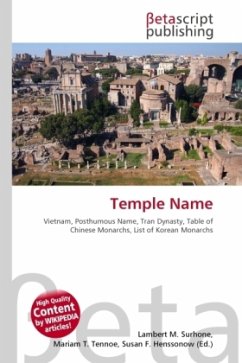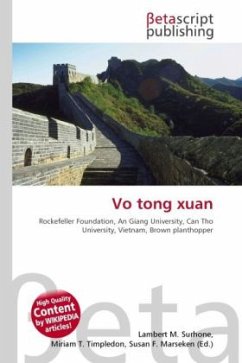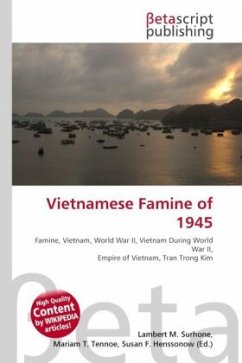High Quality Content by WIKIPEDIA articles! Temple names are commonly used when naming most Chinese, Korean (Goryeo and Joseon periods), and Vietnamese (such dynasties as Tran, Ly, and Le) royalty. They should not be confused with era names. Compared to posthumous names, the use of temple names is more exclusive. Temple names were assigned sporadically from the Han Dynasty and regularly from the Tang Dynasty. Some Han emperors had their temple names permanently removed by their descendants in 190. They are the usual way to refer to emperors from the Tang Dynasty up to (but not including) the Ming Dynasty. For the Ming Dynasty and Qing Dynasty (from 1368), era names were used instead. In Korea, temple names are used to refer to kings of the early Goryeo (until 1274), and kings and emperors of the Joseon Dynasty. For the Korean Empire (1897-1910), era names should be used, but the temple names are often used instead.
Bitte wählen Sie Ihr Anliegen aus.
Rechnungen
Retourenschein anfordern
Bestellstatus
Storno








